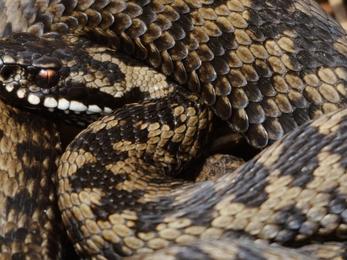Globally reptiles, like the adder, have been declining due to threats such as climate change and they have higher extinction rates due to smaller population sizes.
Adders in particular are declining across their ranges in Europe, including the UK. My research focused on the declining Surrey adder population. Surrey has the second largest habitat (by area) to support adders in the UK, after Devon. However, the habitat in Surrey is much more fragmented by urbanisation due to its proximity to London.
The Surrey Amphibian and Reptile Group (SARG) gave me data on adder sightings from 1881 to the present day. From this, I was able to map the distribution of adders across Surrey over time alongside known threats to adder populations such as wildfire heatmaps.
I found that the number of adder sightings declined from pre-1990 to 1999, but increased from 2000 onwards – probably due to improved survey methods. My work also suggests that Surrey’s adders are threatened by major roads (e.g. the M25), urban development, and wildfires which all lead to habitat fragmentation. In response to these findings, I suggested future conservation policies/projects, from improving adder-focused development plans to taking creative public outreach storytelling approaches from adder sightings to increase public awareness.







